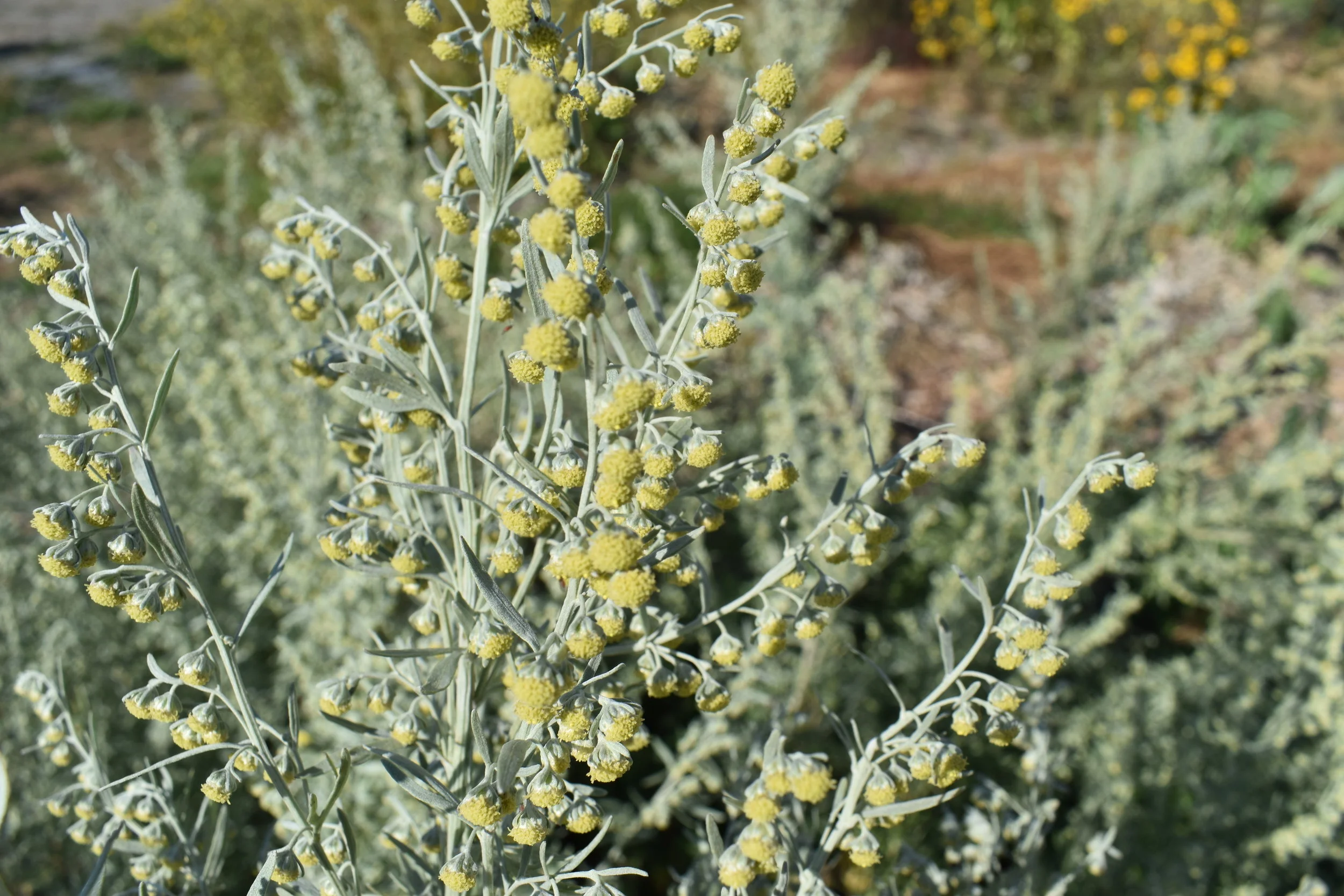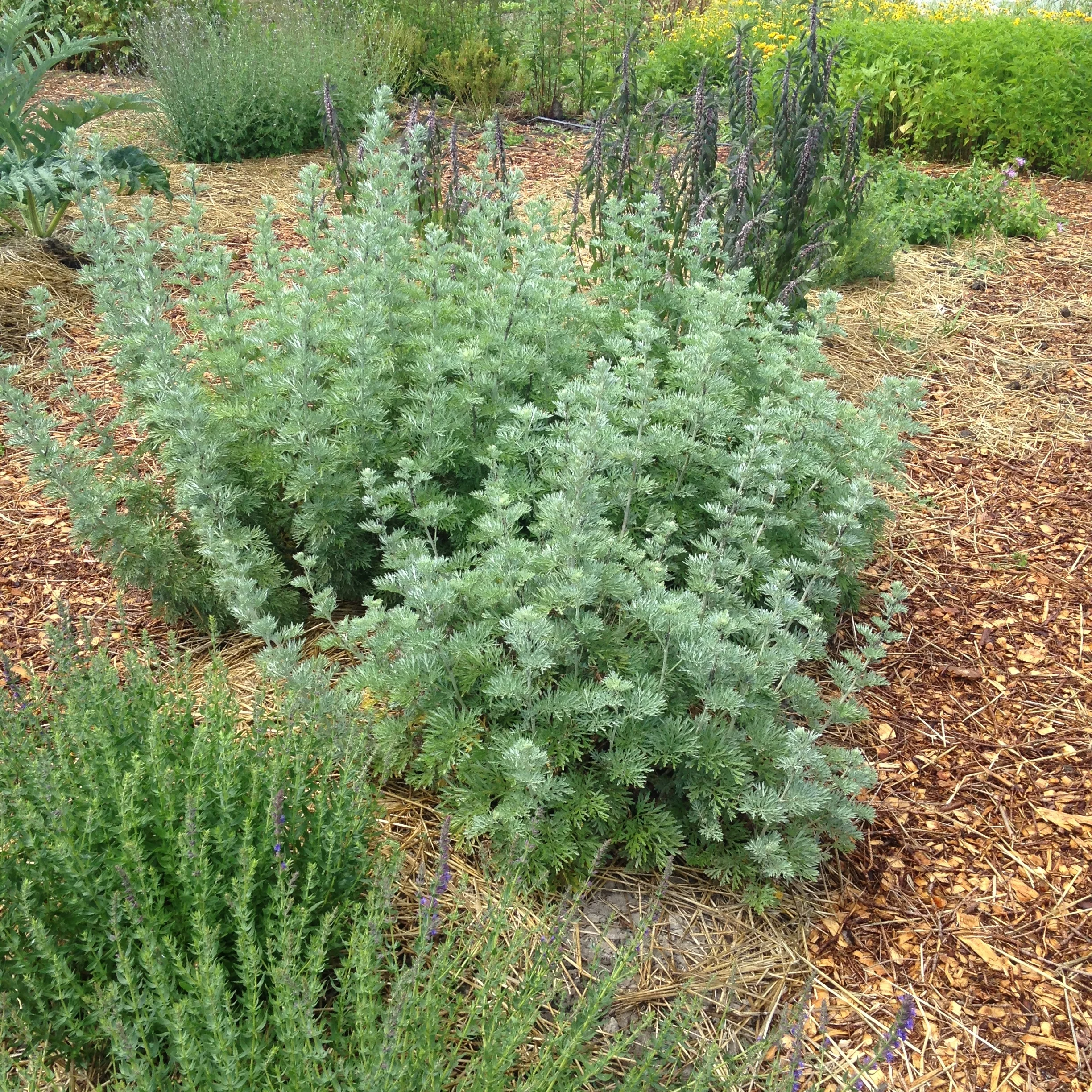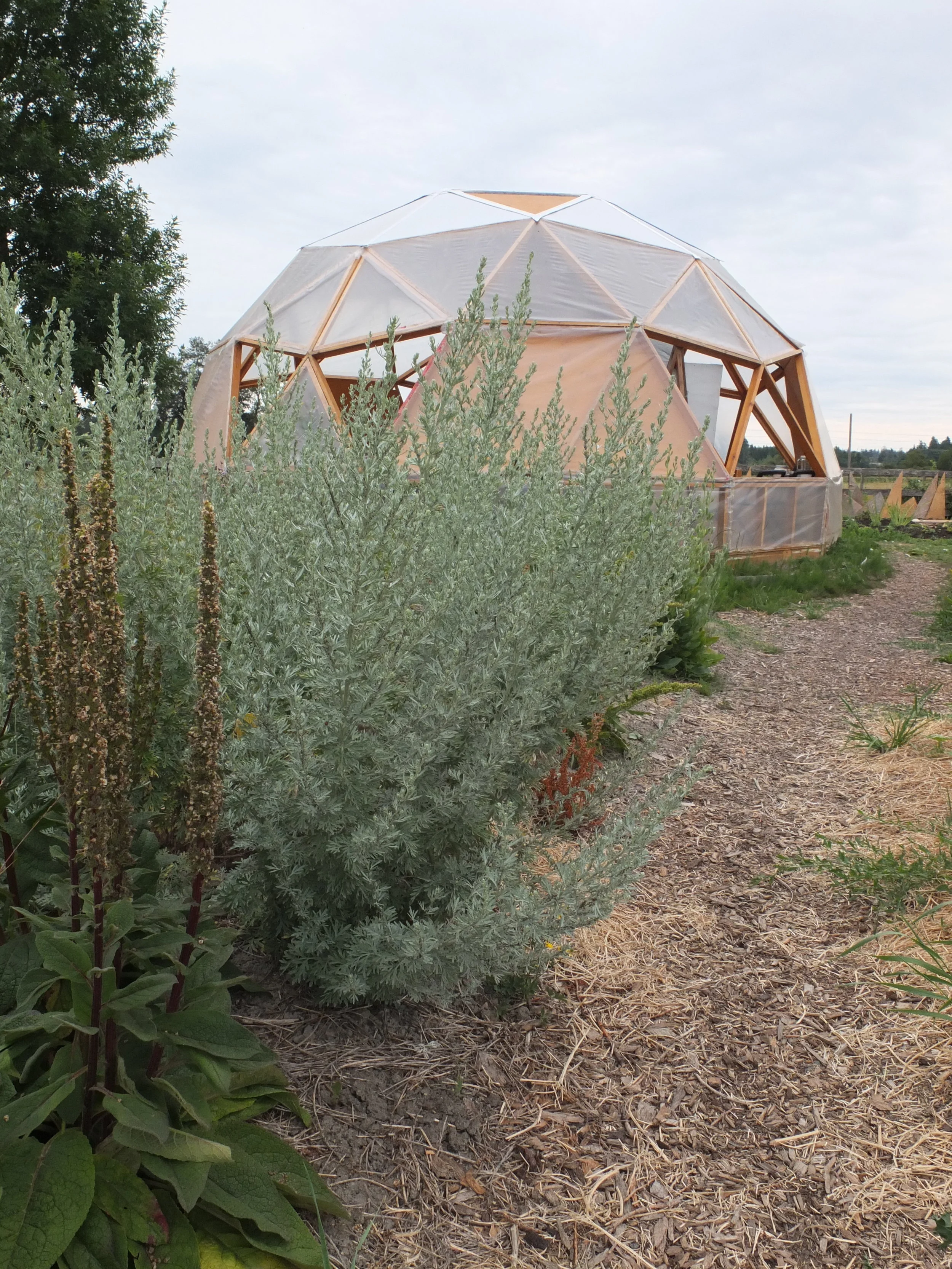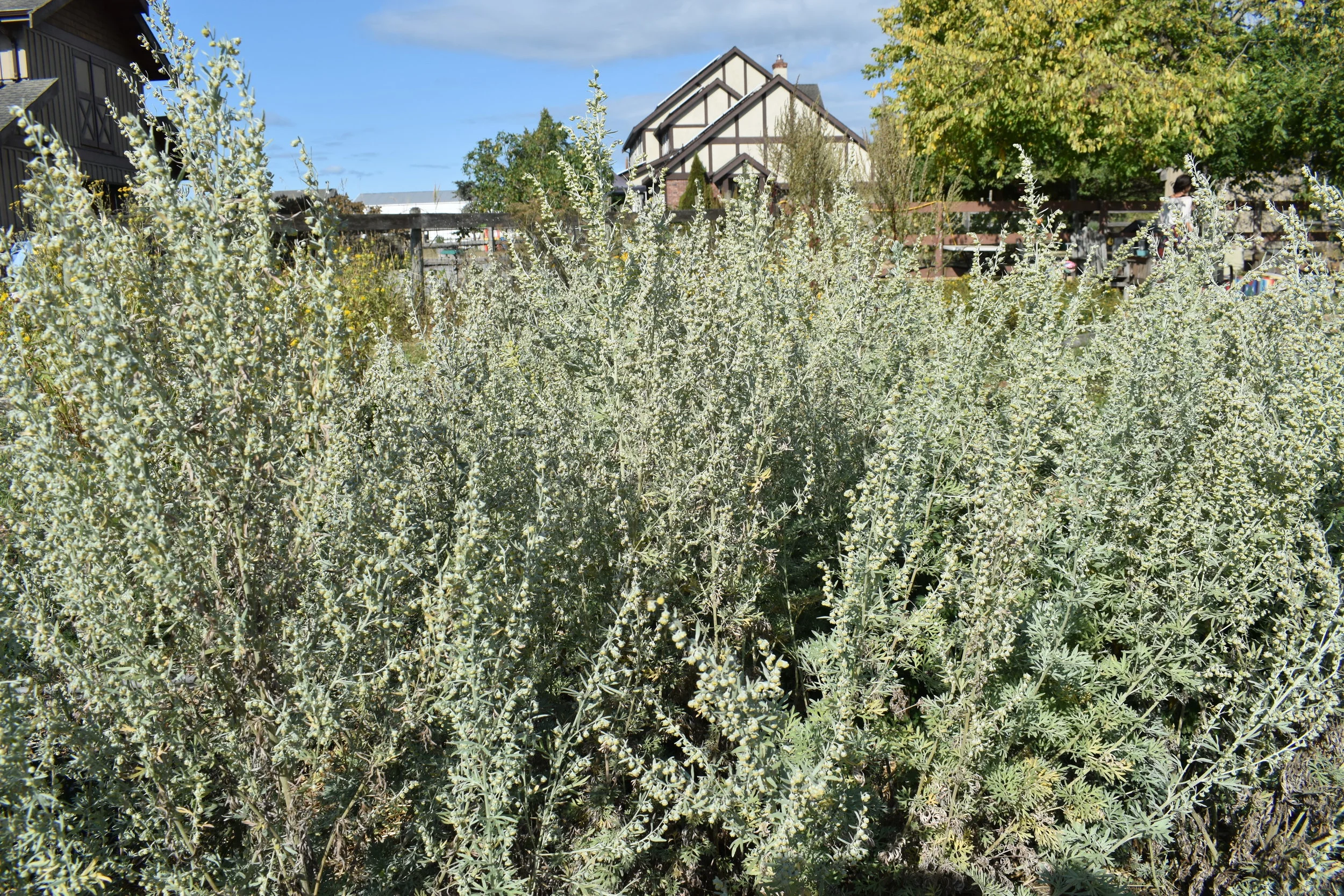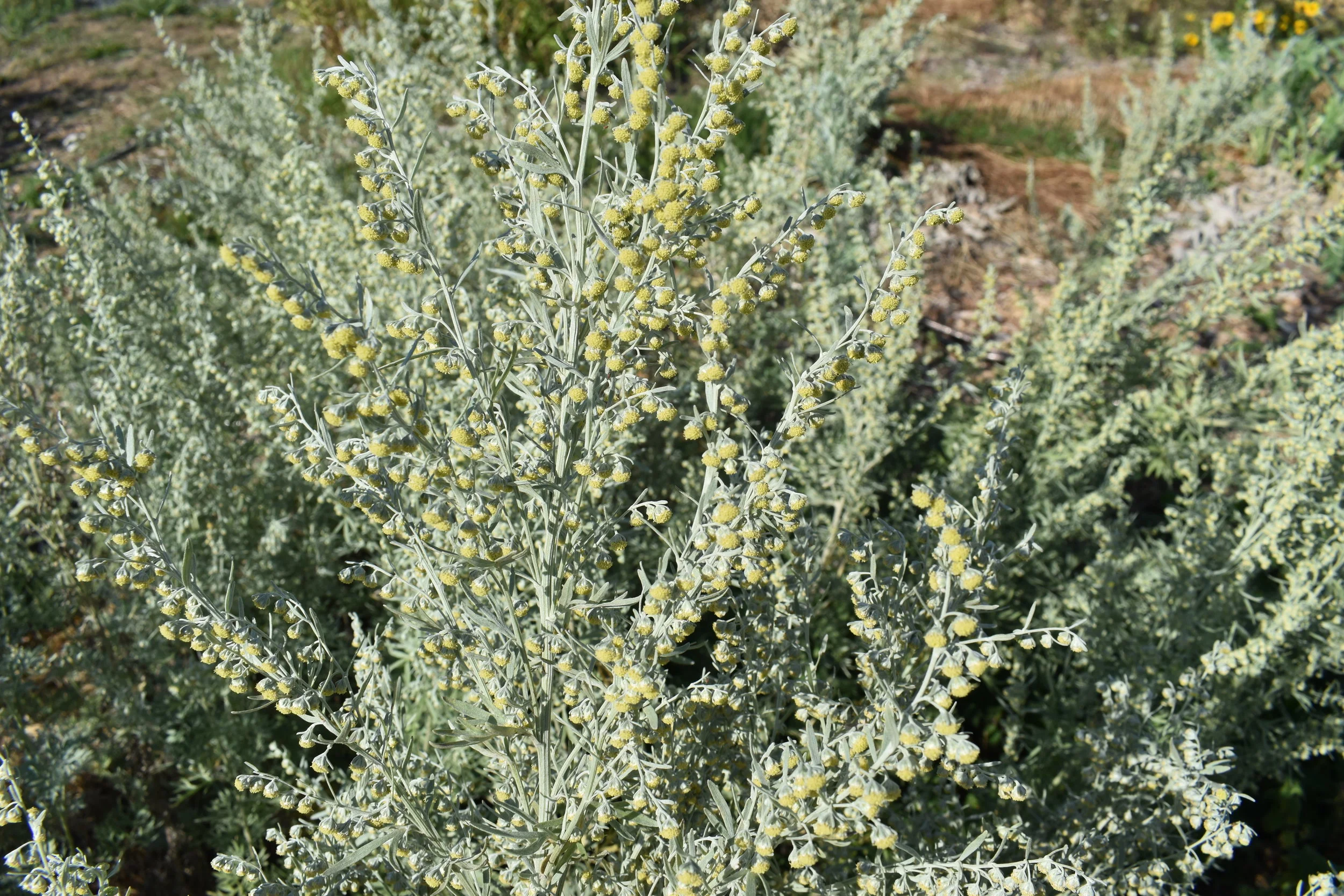Common Names
Wormwood
Botanical Name
Artemisia absinthium
Plant Family
Asteraceae (Daisy Family)
Native Range
Mediterranean and parts of Eurasia and Africa.
Life Cycle
Perennial
Hardiness Zone
3-9
Habit
Beautiful silver gray-green leaves are soft and finely divided. Plants have an upright habit, mounding when young. Will grow anywhere from 4-6 feet in bloom depending on the conditions.
Sun/Soil
Full sun, well-drained soil.
Germination/Sowing
Seeds germinate easily and can be direct sown in fall or spring, or started in flats in the spring and then transplanted out.
Growing/Care
Wormwood is lovely in the herb garden with its delicate silvery foliage. It will grow to 3ft wide and 4ft tall. It is one of those carefree plants that thrives on neglect. It likes a super sunny spot with good exposure and well-drained soil. It is extremely drought tolerant, making it a good choice for xeriscaping. The plants propagate easily from seed and it is common to find a few self-sown seedlings popping up each spring.
Harvesting
The aerial parts can be harvested when the plants are in bloom in summer.
Culinary Uses
It would be very difficult to eat much of this extremely bitter plant.
Medicinal Uses
Though it has a medicine chest of uses ~ antiseptic, analgesic, astringent, anti-inflammatory, antiparasitic, digestive stimulant, anticancer, emmenagogue, nervine, antidepressant, diaphoretic, antispasmodic ~ Wormwood is probably most well known as a key ingredient in the drink absinthe.
Absinthe was a popular alcoholic beverage in Europe, especially in France, in the late 19th and early 20th century. Due to its mind-alerting effects, Absinthe use was associated with the bohemian culture of the times. Inspiring unconventional thought and lucid visions it was a favorite muse for many artists, writers and poets, such as Van Gogh, Toulouse-Lautrec, Wilde, Poe and Baudelaire.
The psychedelic effects of Absinthe can be largely attributed to its thujone content, a volatile oil contained in the aerial parts of the Wormwood plant. True absinthe of the past contained much higher amounts of thujone than today, and has been long since banned. For many years thujone was thought to act similarly to THC on the cannabinoid receptors in the brain, however this has since been proven false.
What we do know is that thujone is a GABA receptor antagonist (kind of the reverse of the calming effects of Scutellaria, which also has an effect on GABA). Without access to GABA, a natural inhibitor of nerve impulses, neurons fire more easily and their signaling may go out of control. This may explain the state of high sensitization described by the creative individuals who were inspired by the effects of absinthe, as well as the herbs use as a tool for lucid dreaming.
Themes
Apothecary Garden, Low Maintenance, Drought Tolerant, Deer Resistant, Attracts Pollinators, Container Garden, Cut Flowers.
